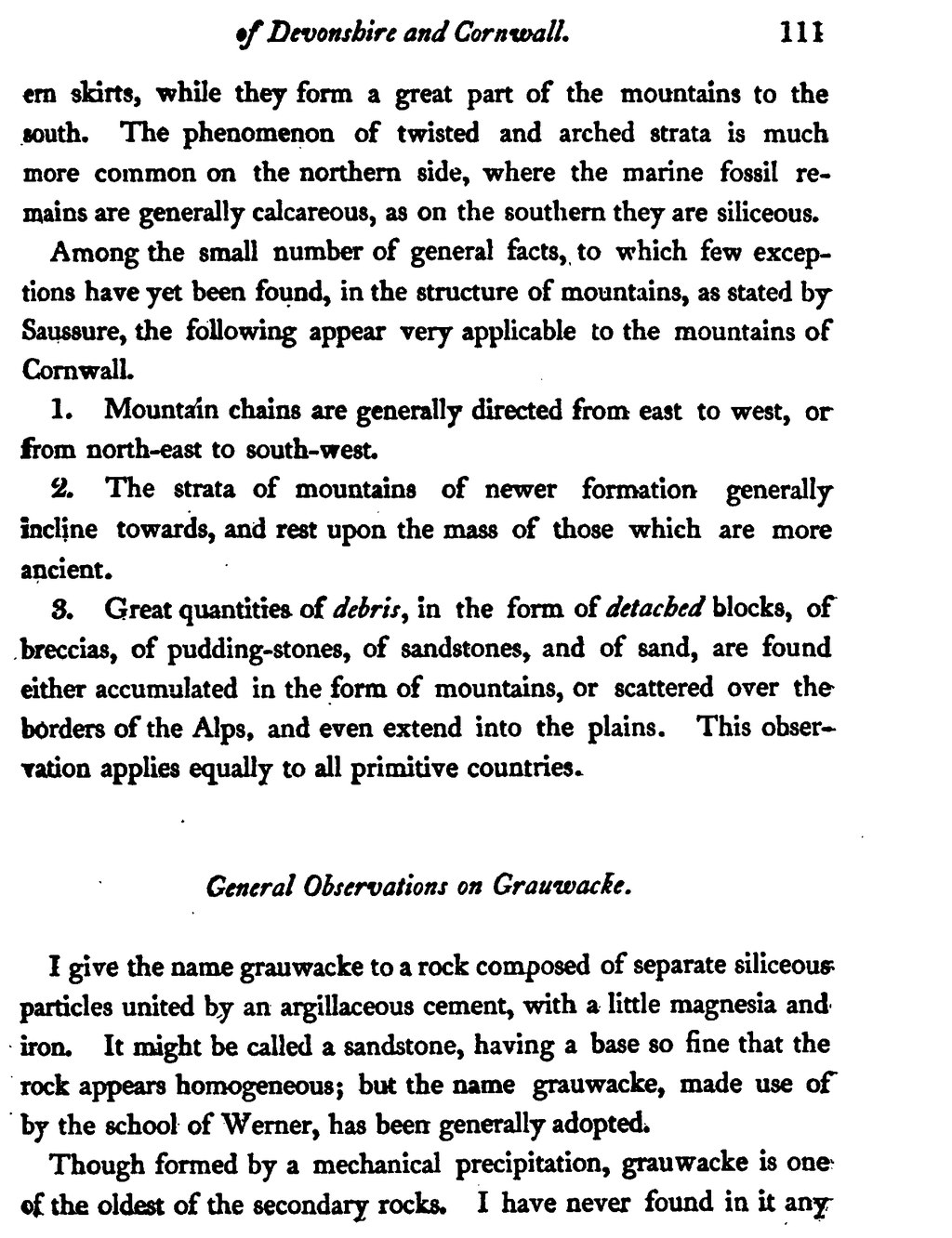skirts, while they form a great part of the mountains to the south. The phenomenon of twisted and arched strata is much more common on the northern side, where the marine fossil remains are generally calcareous, as on the southern they are siliceous.
Among the small number of general facts, to which few exceptions have yet been found, in the structure of mountains, as stated by Saussure, the following appear very applicable to the mountains of Cornwall.
1. Mountain chains are generally directed from east to west, or from north-east to south-west.
2. The strata of mountains of newer formation generally incline towards, and rest upon the mass of those which are more ancient.
3. Great quantities of debris, in the form of detached blocks, of breccias, of pudding-stones, of sandstones, and of sand, are found either accumulated in the form of mountains, or scattered over the borders of the Alps, and even extend into the plains. This observation applies equally to all primitive countries.
General Observations on Grauwacke.
I give the name grauwacke to a rock composed of separate siliceous particles united by an argillaceous cement, with a little magnesia and iron. It might be called a sandstone, having a bass so fine that the rock appears homogeneous; but the name grauwacke, made use of by the school of Werner, has been generally adopted.
Though formed by a mechanical precipitation, grauwacke is one of the oldest of the secondary rocks. I have never found in it any
